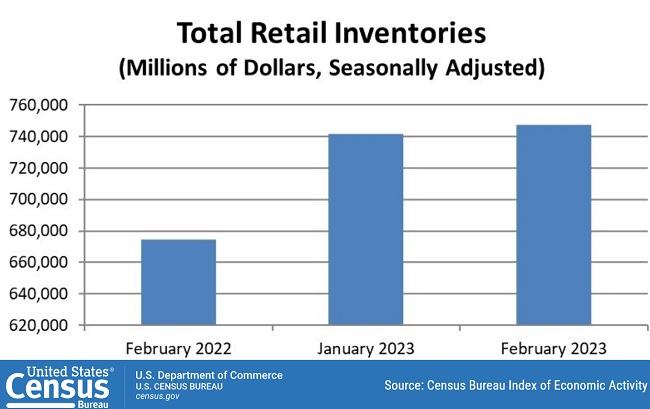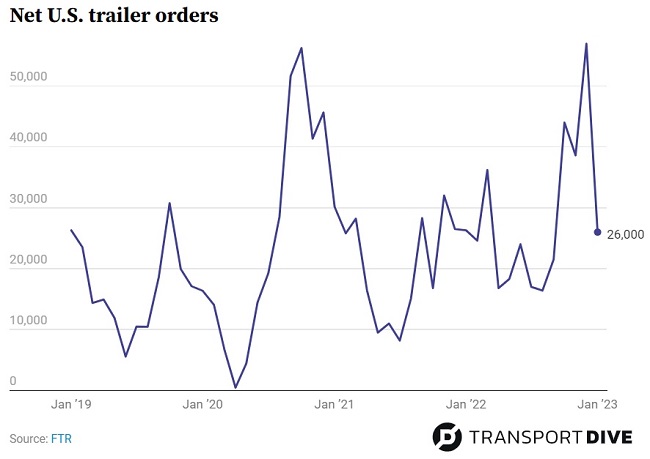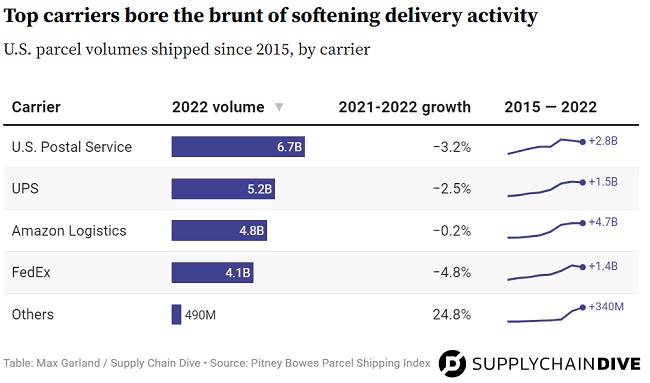Transportation industry trends heading into Q2 and mid-year continue to be a bellwether for the global business climate.
As leading economic indicators and news developments hint at the status quo for the months ahead, implementing autonomous logistics across your transportation operations expands your control over costs and service to customers.
The March Logistics Managers’ Index showed the lowest reading in its history as transportation prices hit an "all-time low," and transportation utilization reflected no upward movement for the first time in 2023.
Inventory glut for wholesalers and retailers reduced freight demand and rates in Q1, as reflected by a 6% decline in the Cass Truckload Linehaul Index compiling spot and contract freight rates. The bottom for spot rates is uncertain in the current mix of capacity and weak demand.
Following the freight demand trend, March orders for Class 8 trucks dropped to 19,200 units, down 10% from last year. Used Class 8 truck sales dropped 19.6% in February (y/y) and the average cost fell 23.3%. At the same time, trailer orders cooled from a record high in December and more than 346,000 during 2022 to just 26,000 trailers ordered in January.


Businesses moving goods internationally are reaping big savings on ocean transport costs – spot rates are down 90% from pandemic-era highs. U.S. imports in February were down 25% (y/y) and international demand drops are sharpest for West Coast ports, where supply chain participants urge the White House to intervene in West Coast port labor talks underway since May 2022.
Center Stage: Security
By 2025, Gartner projects that 60% of supply chain organizations will use cybersecurity risk as a significant determinant in conducting third-party transactions. One-third of supply chain orgs will use industry cloud platforms by 2026.
And third parties’ role increases steadily, with global 3PL market revenue reaching $1.47 trillion last year, a 14.5% increase over 2021, and nearly double the 2016 level.
Security concerns apply to freight shipments, too, and food & beverage cargo theft surged up nearly 50% through February. According to the FBI, cargo theft costs trucking companies and retailers $15-$30 billion a year, and it is adding to supply chain disruptions that have fueled inflation.
Areas for Optimism?
Slower capacity growth in March offers hope that an end may be approaching for the freight downcycle. The National Retail Federation’s prediction for 4-6% growth in retail sales during 2023 would help turn the tide.
Ongoing e-commerce demand will play a role, too, even after parcel carriers saw a 2.2% drop in volumes (and a 6.5% increase in revenue). The slowdown in volume growth is expected to continue, even though last year, U.S. e-commerce reached $1 trillion for the first time ever, making up 14.6% of total retail sales.
And while weaker freight demand affects diesel fuel prices as well, nine straight weeks of price drops may be economic danger signs. The U.S. average price for on-highway diesel in the April 3 report, $4.105 per gallon is the lowest average since Feb. 28, 2022 ($4.104). However, oil prices are rising steeply in the wake of plans for reduced production in Saudi Arabia.

What else deserves attention?
E-commerce and Freight Balancing New Patterns of Demand
Reports say Cargo Theft is Up: How You Can Help Prevent It
Logistics Visibility: What to Expect From a TMS
Digital Supply Chain Transformation: Is Bad Data Wreaking Havoc?







